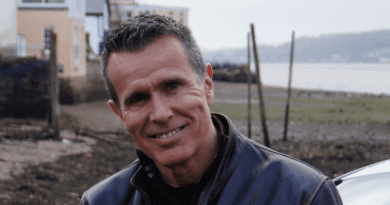
‘There’s still work to do to end EV negativity’
Guy Bartlett, CEO of charge point operator Believ, is an EV enthusiast with more than 20 years’ experience in the energy infrastructure sector. Here, he reflects on his first year as Believ CEO, the challenges the EV sector has faced in 2024 and what lies ahead in 2025.
You’ve been CEO at Believ for a year now. Has it been what you expected?
I knew I was joining a great business, but the Believ team have surpassed my expectations in their enthusiasm and professionalism. Every single team member works tirelessly to support our customers and our mission to make EV charging accessible to all.
I expected the challenges, specifically with the ongoing negativity that unfortunately still surrounds EVs. There is a great deal of work that needs to be done in terms of helping consumers understand the real benefits of driving an EV and exploding some of the myths. I use mine for road trips as well as commuting, and the every-day, stress-free convenience I consider the norm needs to be better communicated. There are so many benefits to owning an EV that hopefully we will see a more positive narrative in 2025.
Do you think 2024 has seen a shift in understanding for the importance of public charging infrastructure?
In general, I’m sad to say, there hasn’t been a significant shift yet.
And that’s because there are still so many EV doom-sayers. The industry is making great strides to make EV charging a more convenient and pleasant experience than filling up with petrol, with regards to services available while you charge, and charging options available – en route, destination and residential. There’s a great deal of thought and tireless work that goes into it, which is reflected in the user experience – but not in what gets reported. With so much negativity, you can understand why there isn’t widespread understanding about the importance of charging infrastructure, and it was only very recently, with announcements from Ford and Vauxhall, that we have been able to correct the perception that it is a lack of infrastructure alone that is causing the delay in EV adoption.
Can you tell us a bit about the scale of the challenge in the UK’s electric switch? And what are the solutions?
Again, the key challenge is in helping drivers to see the cost, reliability and maintenance benefits of EVs, not to mention the environmental need. Until those benefits and end goals are better communicated, the switch won’t happen as quickly or smoothly as it should. Another key challenge is the energy system having enough capacity for everyone to drive an EV. Achieving that is about educating local authorities and consumers about efficient energy use and using data to inform usage strategies and engineering solutions.

Is an equitable charge point spread across the UK important? And how can we achieve it?
An equitable spread of charge points across the UK is vital to ensure no communities are left behind in the electric switch. We need charge point infrastructure to be installed and highly visible ahead of demand in order to encourage people to buy EVs and feel confident that charging will not be an issue. We need that charge point visibility in remote and rural communities, in residential areas where properties don’t have access to at-home charging, town centres, motorways and at a range of businesses – shopping, garden, and leisure centres for example.
One way to support an equitable spread of charging infrastructure is for government funding to be focused on areas that are not commercially viable for private industry.
Does that suggest local authorities, businesses and landowners need different types of support when installing publicly accessible charging?
Yes, because these groups speak to different ends of the charging offering. Local authorities installing residential charging can utilise lower speeds that suit overnight or long-stay charging. ‘Destinations’, such as retail parks or leisure centres would generally opt for charging solutions appropriate for dwell times of between 45 minutes and two hours. Landowners with sites suitable for ‘en route’ charging hubs require the fastest ultra-rapid solutions, ideal for drivers who want to quickly top up while they have a hot drink or a sandwich. Landowners are also looking for EV charging hubs to be installed with coffee shops, toilets, retail offerings and other public conveniences.

Sometimes a blended approach that utilises a range of charging speeds is appropriate, such as local authority car parks and businesses looking to support shorter dwell times. In all instances it is useful to work with a charge point operator, such as Believ, that provides all speeds of charge point, dependent on site need.
If you could have three wishes for 2025, what would they be?
More positive media coverage that takes into account the very real benefits of driving EVs, as well as the decrease in air pollution. The reduction in carbon emissions and its impact is a long-term benefit and goal, but cleaner air is immediate and incredibly important for our health.
The accelerated rollout of EV charging infrastructure – which ensures an even spread of charge points across the UK. That means working with local authorities, businesses and landlords collaboratively to ensure that installations are best optimised for each locality.
Further support from government by way of actively promoting EV benefits, providing clarity on ICE phase-out timelines and deadlines, and removing VAT on public charging.





